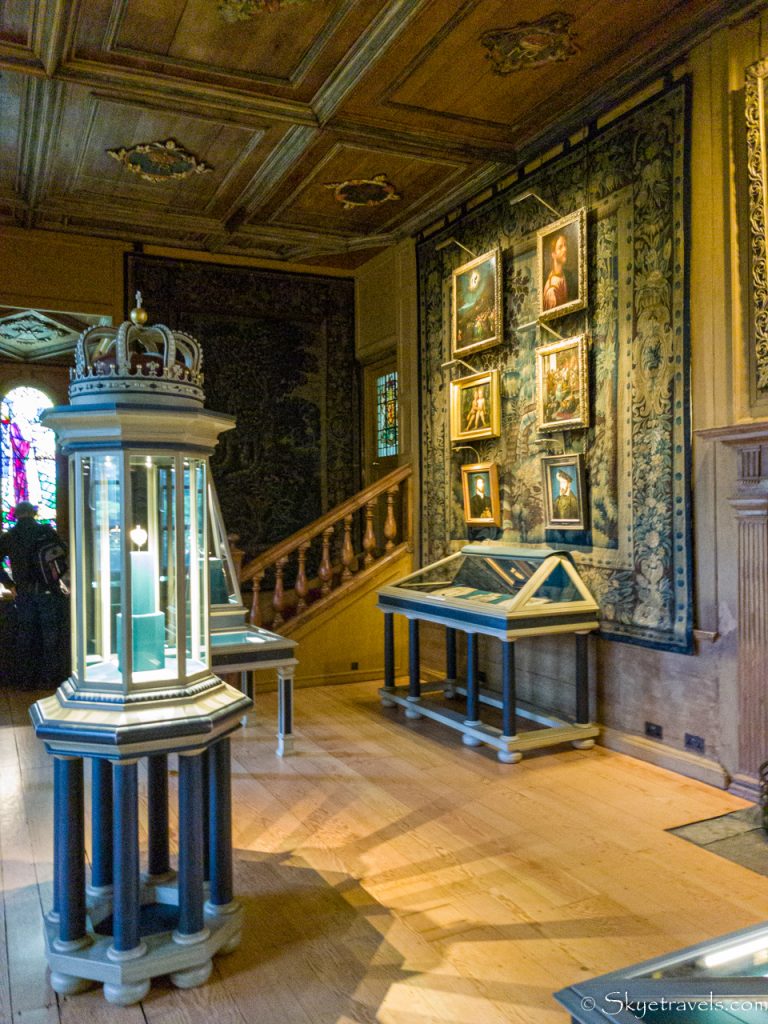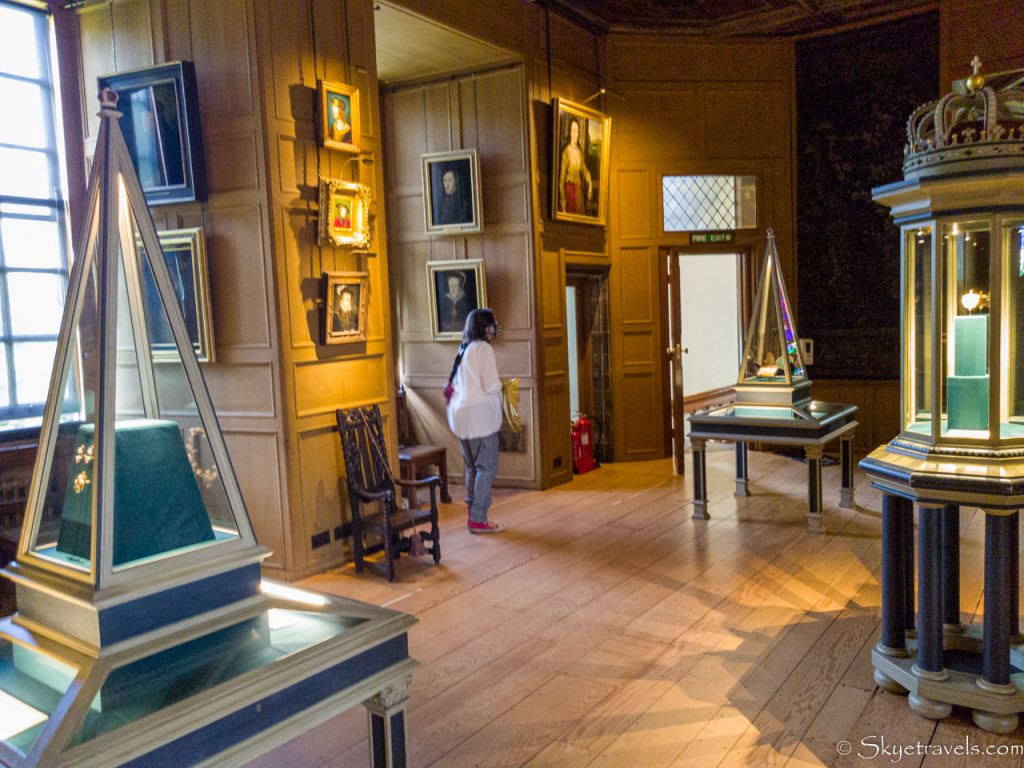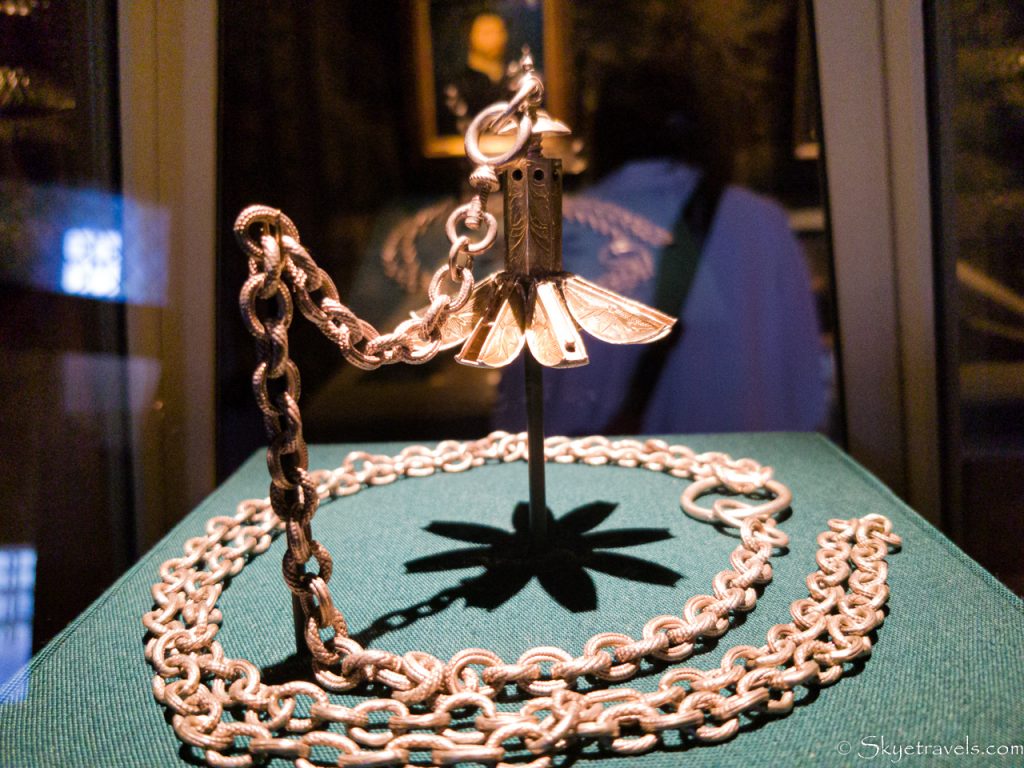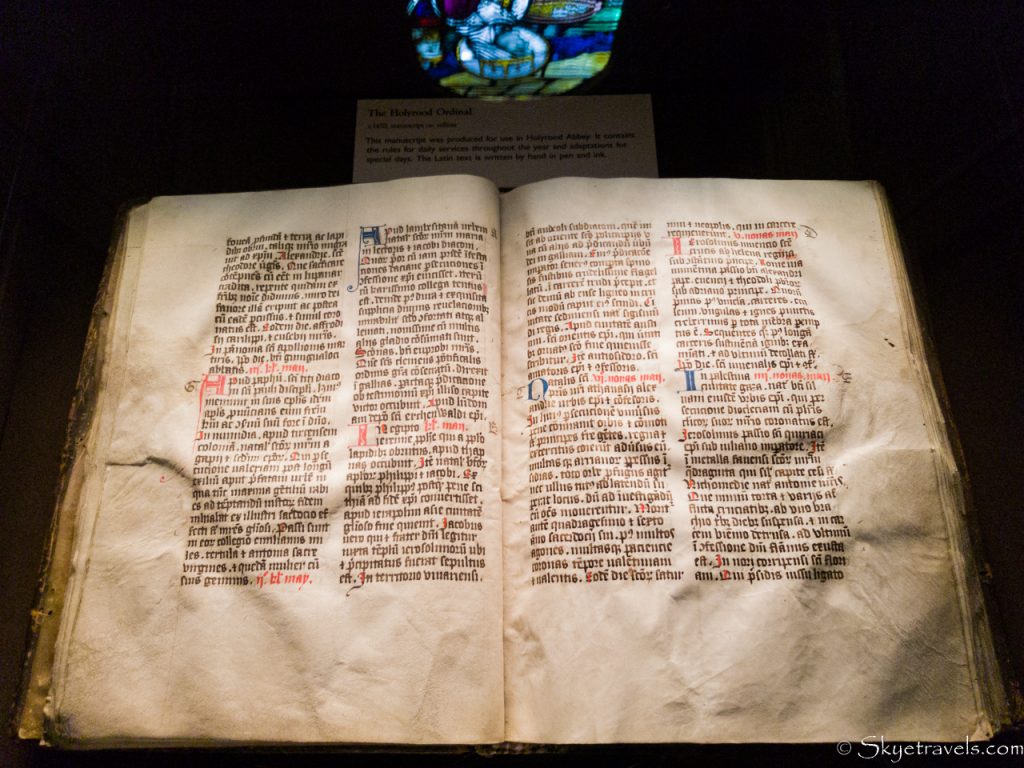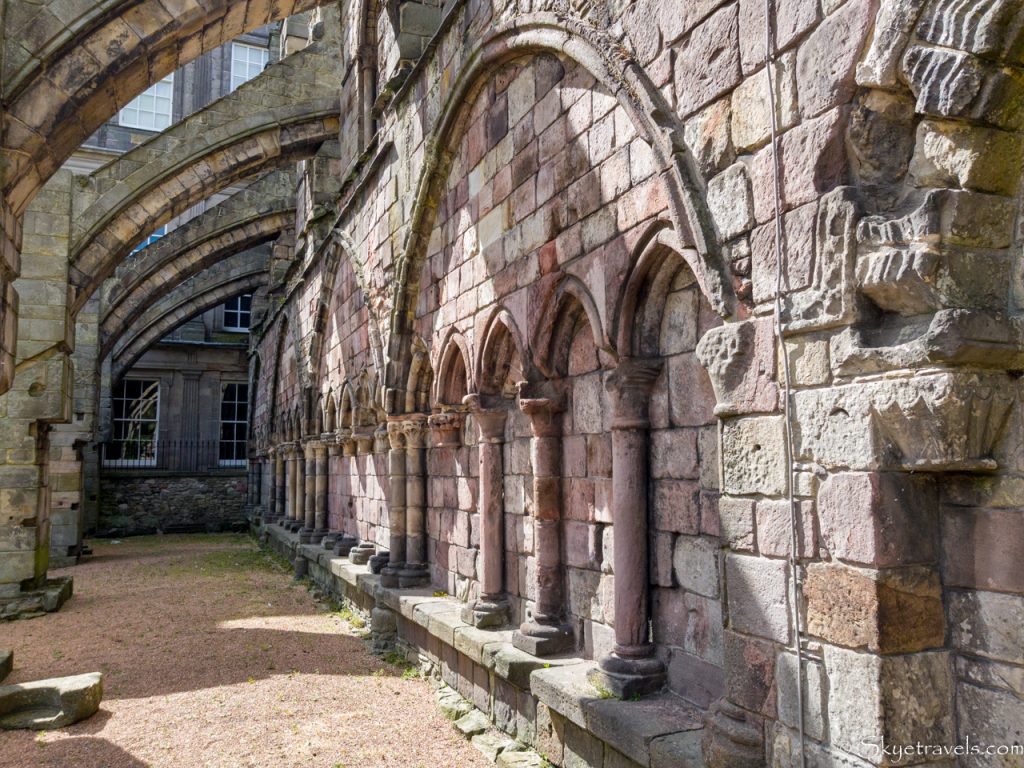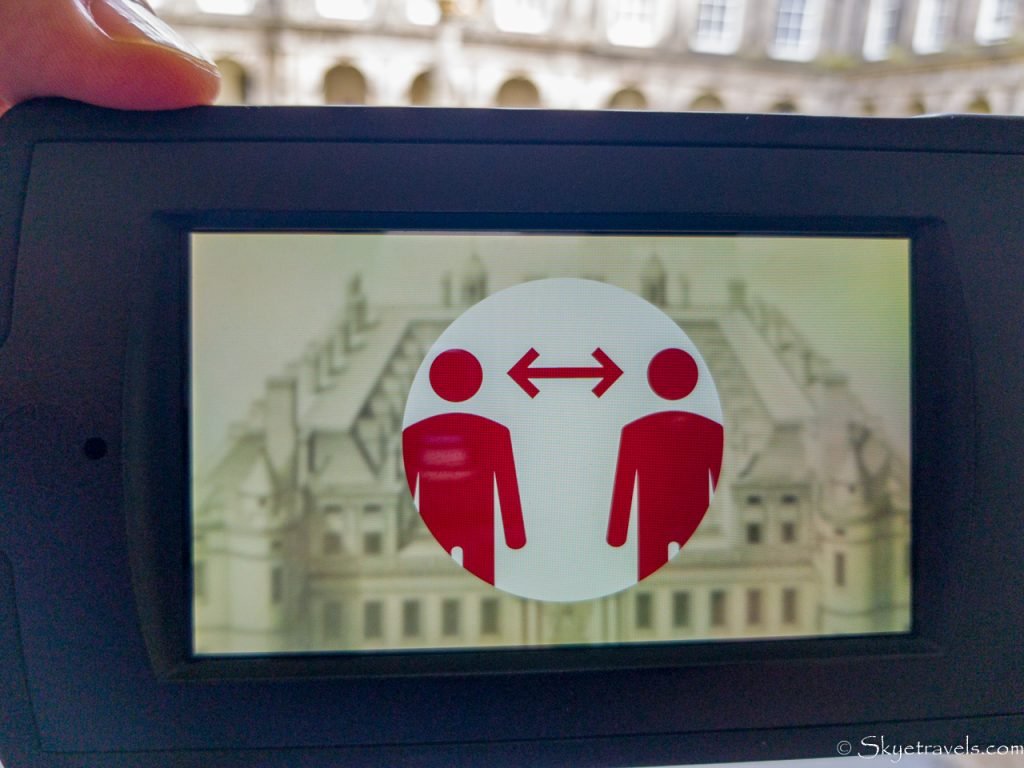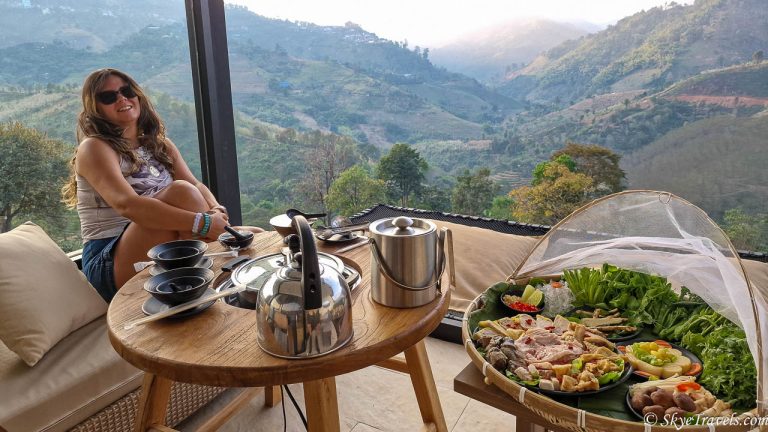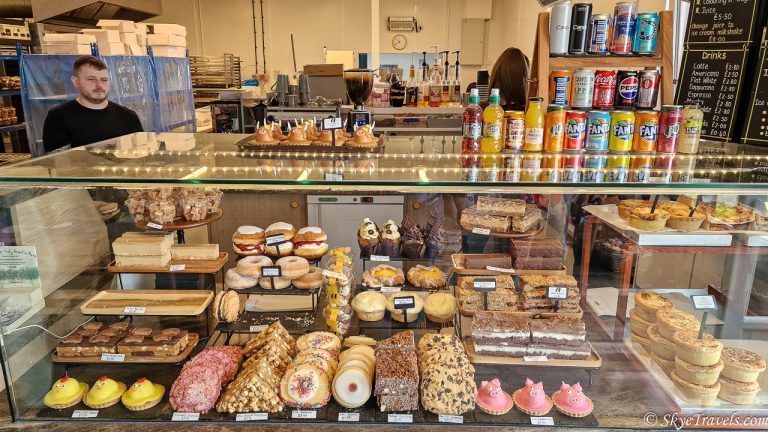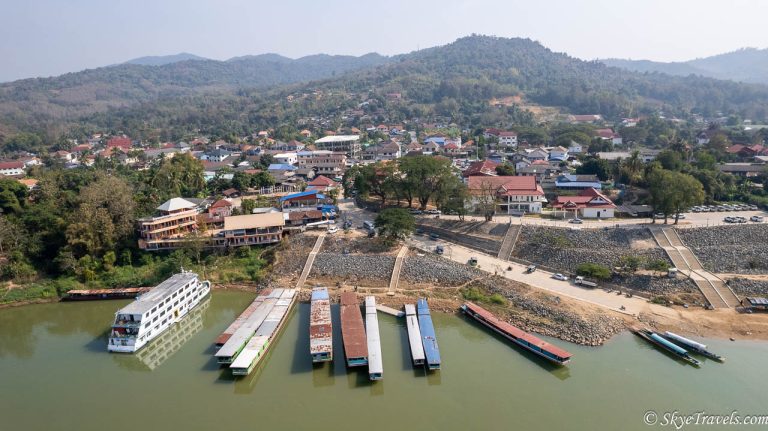You can once again take a tour of Holyrood Palace, now that enhanced health and safety measures are in place. Among the changes are mandatory advanced bookings and a limited number of people in the smaller rooms, which will reduce the number of people who can take the tours each day. If you’re not able to visit soon, here’s a virtual tour of the palace in the meantime.
An Overview of Holyrood Palace
The original building at this site was the Augustinian Holyrood Abbey, founded in 1128. The name derives from either Old English “holy rood” or Scots “haly ruid”, both of which meant “holy cross”. The abbey was purportedly started with a fragment of the cross which Jesus was crucified on. Over the next four centuries, the abbey was used for parliamentary sessions, crownings and interments.
Between 1501 and 1505, a gothic palace was built next to the abbey by James IV. This was followed by a complete reconstruction in the 1670s, which is the design we see today. The building is three stories tall and built around a quadrangle – a rectangular courtyard. Three styles of columns, each more intricate than the level below, decorate the building around the courtyard.
A Virtual Tour of Holyrood Palace
Your ticket to the palace comes with a free audio guide. It covers each part of the castle and grounds, and includes several royal and notable figures giving speeches about the palace.
For the first time ever, photographs are now allowed in the palace (not just in the grounds), which is how I’m able to give you a virtual tour of the palace. While this will give you the photos, I don’t want to supplant the full audio guide tour of Holyrood Palace. You’ll have to visit in person to get that.
Front Courtyard
The highlight of the front courtyard is the ornate fountain, built in the 19th century as a replica of the 16th-century fountain found at Linlithgow Palace. For several years, there were storage containers on the south side of the courtyard, blocking a view of the palace from passing tour busses, but those have recently been removed.
Quadrangle
The quadrangle might appear to be simple at first, but architecture lovers will note the intricate detail of the columns and stonework.
Kitchens
My tour this year was different than last year, and a new room was opened up which previously had never been on display – the kitchens. This is the only part of the palace where photographs are still forbidden, although they let me take a snap of the decorations beside the actual kitchens.
Grand Staircase
The grand staircase isn’t as impressive as in some palaces, but still beautiful in its own right. At the bottom, you’ll find display cases and swords on the walls. Surrounding the staircase are huge tapestries and portraits.
Royal Dining Room
This is the room where the Queen would host meals, although it was originally a guard chamber. The gorgeous silver banquet service dates back to 1935 and was a gift to King George V and Queen Mary by Sir Alexander Grant, in honor of their Silver Jubilee.
Throne Room
This room is pretty obvious. The two thrones on the righthand side were commissioned in 1911, and the wood paneling was added in 1929. The portraits are of Charles I, Charles II and his consort, James II and his second wife, and James VII.
Presence Chamber
This room used to be called the Presence Chamber of Charles II. There are 4 large tapestries from Buckingham Palace which Queen Victoria brought up in 1851. During the realm of Queen Mary of Scots, there were 13 sets of tapestries throughout the palace, but none of these survived to this day.
Privy Chamber
Privy here means private, not a toilet. This was the original private chamber of Charles II where he entertained guests. There are several beautiful works of art, paintings and other artifacts around the room, including the intricate details on the ceiling.
King’s Ante-chamber
This was the King’s Study and features many more beautiful works of art and tapestries, as well as luxurious pieces of furniture. The centerpieces of the room are the harp and harpsichord.
King’s Bedchamber
The highlight of this room is the ornate bed, which dates back at least to 1684, although it was restored in 1976. Only the most privileged guests were allowed to enter this room when the king lived here. It’s also the only room with a colored painting on the ceiling.
King’s Closet
This was yet another lavish room for the king, complete with two ornate sleeping chairs and a Flemish cabinet from the 17th century.
Great Gallery
This is the largest room in the palace. Along the walls are portraits of all the Scottish monarchs, dating back to the 1680s. Some of the portraits were damaged (and later repaired) during the Jacobite uprising. The room has been used for state functions and banquets by the Queen, as well as to carry out investitures for Scottish recipients of orders (knighthood, etc.).
Lobby and Ante-Chamber
The next two rooms are quite similar to other rooms in the palace with their decorations, tapestries and portraits. There are also a few artifacts in display cases you can see, including a tartan dress which I particularly liked.
Lord Darnley’s Bedchamber
This wasn’t actually the bedchamber of Lord Darnley, but rather contains the bed which he used before it was donated to Holyrood Palace in 1682. Bonnie Prince Charlie slept in this bed in 1745. It’s now displayed behind a glass barrier to preserve the textiles.
Mary Queen of Scots’ Bedchamber
This was the very bedchamber that Mary Queen of Scots slept in during the 16th century. The gorgeous room is filled with furniture and artifacts, many of which were gifted to the castle long after Mary Queen of Scots was in residence.
Mary Queen of Scots’ Outer Chamber
This is the room where Mary Queen of Scots received her visitors, and included a small enclave on the east wall where she did her prayers. This is also where her secretary David Rizzio was stabbed to death. The reddish patch on the wooden floorboards by the window is attributed to the spot where he was killed. Now the room holds relics connected to Mary Queen of Scots, including the Darnley Jewel.
Holyrood Abbey
Unfortunately, the interior of the Holyrood Abbey is currently closed for renovations. It has been a ruin since the 18th century, but the medieval decorations and architectural styles are still evident.
Gardens
The gardens surrounding the castle are beautifully manicured by an expert team. Until now, the Queen has hosted a Garden Party every year in July during the week when she is in residence at the palace. In the northern portion of the gardens, there’s a sundial from 1633. You also have great views of the outside of Holyrood Abbey from the garden, as well as Arthur’s Seat and Salisbury Crag.
Visiting Holyrood Palace in Person
As mentioned, you can only visit the palace with advanced bookings, and the tour sizes are limited. If you’re planning to visit Edinburgh in the near future and want to take a tour of Holyrood Palace, make sure you reserve your spot ASAP.
Things to Know When Visiting Holyrood Palace
Following the world events of 2020, enhanced health and safety features are in place throughout the palace. This includes hand sanitizer stations, social distancing, and extensive cleaning of all services. At this time, masks are not required to be worn in the castle. The safety features are also integrated into the audio guide.
The audio guide of the palace lasts about an hour, but you can take as long as you want to explore the palace (but take into consideration that only a limited number of people are allowed in each area, except for the gardens, and social distancing is currently in effect. If you can, bring your own headphones to use with the audio guide.
Eating and drinking are not permitted within the palace, but there’s a cafe where you can get refreshments. You and your possessions might be searched before entering, and large backpacks and weapons aren’t allowed (obviously). Until now photographs were not allowed in the palace (as it was a government building), but due to the uncertainty of the Queen returning to the palace at this time, photographs are okay!
Further Reading
Finished with your tour and looking for other activities? Here are some other places to eat at, and activities to partake in around Edinburgh.
- 5 Amazing Cafes and Restaurants in Edinburgh That I Frequent
- Best Places to Eat in Edinburgh on a Budget
- How to Find the Best Brazilian Crepes in Edinburgh
- The Village Hotel in Edinburgh is So Much More Than a Hotel
- There’s a Cat Cafe in Edinburgh!
- Enjoying the Happiest Place in Scotland at Edinburgh’s Chihuahua Cafe
- Begin Your Journey in Scotland with a Secret Food Tour in Edinburgh
- What the Da Vinci Code Didn’t Show You About Rosslyn Chapel
- Camera Obscura in Edinburgh Brings Out the Kid in You
- Experience the Underground Preservation of Mary King’s Close
- Escape Edinburgh: The Most Fun Activity in Edinburgh’s New Town
- Finding the Best Ghost Tours in Edinburgh
- Riding the Most Delicious Tour in Edinburgh on the Red Bus Bistro
- 9 Free Attractions to Visit in Edinburgh
- 10 Activities for The Perfect Day Trip from Edinburgh
Here’s some extra reading to save hundreds on your next vacation or stage of your journey.
- 5 Steps to Book Cheap Flights
- Hostels: To Book or Not to Book
- Is Workaway Worth it for the Traveler?
This post may contain affiliate links. These links help give me the wherewithal to continue traveling at no additional cost to you. For more information, click here.







































